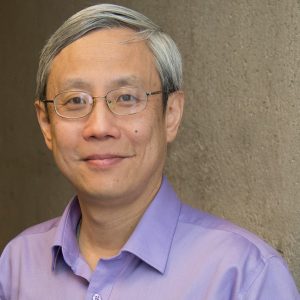The Association for Computing Machinery (ACM) has named York University Professor Jimmy Huang a 2017 Distinguished Member for his innovative accomplishments in a cutting-edge, technical field.
Huang is a professor and York Research Chair in Big Data Analytics in the Faculty of Liberal Arts & Professional Studies’ School of Information Technology. He is among this year’s group of 43 ACM Distinguished Members, who hail from leading universities, corporations and research institutions around the world.
Under the ACM category of scientific contributions to computing to which Huang belongs, 31 distinguished scientists were elected. The ACM is the world’s largest and most well-known scientific and educational computing society.

Professor Jimmy Huang
“Computing technology is becoming an increasingly dominant force in our daily lives and is transforming society at every level,” said ACM President Vicki L. Hanson. “In naming a new roster of Distinguished Members each year, ACM underscored that the innovations which improve our lives do not come about by accident, but rather are the result of the hard work, inspiration and creativity of leading professionals in the field. We honor the 2017 class of ACM Distinguished Members for the essential role their accomplishments play in how we live and work.”
York’s Vice-President Research & Innovation, Robert Haché, said York is delighted with the news.
“This award recognizes extraordinary achievement,” said Haché. “Professor Huang is a pioneer in the areas of information retrieval, big data and their applications to the web and medical healthcare.”
Huang works with enormous volumes of data, often complicated in structure and diverse in content.
“My major research focuses on developing next-generation information retrieval techniques for a variety of information search applications,” he said. “In particular, my work has been largely involved in extracting knowledge via automatically searching and analyzing big textual, medical and social media data.”
Currently, for example, Huang is working with data from Twitter and electronic medical records from the Institute for Clinical Evaluative Sciences and the Medical School of the University of Pittsburgh.
Huang is a major contributor to the probabilistic model of information retrieval, one of the most popular in the field. He also played an important role in the development of the well-known Okapi retrieval system, one type of probabilistic information retrieval system.
Over the past decade, Huang has published prolifically in more than 200 refereed papers in top-tier journals. His team’s three most recent research projects have been published by IEEE TKDE’18, a journal on knowledge and data engineering; AAAI’18, a conference in artificial intelligence; and SIGKDD’17, a conference in data mining, knowledge discovery and big data analytics.
Huang has also served as the General Conference Chair for the 19th ACM International Conference on Information and Knowledge Management and will serve as General Conference Chair for the 43rd International ACM SIGIR Conference on Research and Development in Information Retrieval. For the past ACM SIGIR Conferences that have occurred since Huang joined York University, his team has published 27 papers.
“With regard to this ACM distinction, I would like to give credit to the significant contribution made by my world-class research team that consists of a pool of very talented intellectuals from the Information Retrieval and Knowledge Management Lab at York University,” says Huang. “We have dedicated ourselves to the theory and application of information retrieval and knowledge management, leading to successful scientific results and industrial applications. We always expose ourselves to innovative and impactful research.”
On the future of his research, Huang said, “I will remain focused on the various ways of advancing the scientific and industrial foundations of information search, text mining, deep learning, big data analytics with complex structures and their applications to the Web and medical healthcare.”
